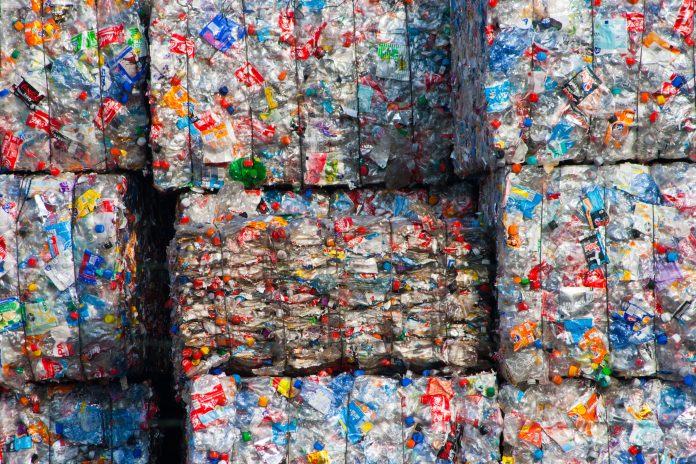Jennifer Perr, Sustainability Director at Hi-Cone explains how the EU Green Deal can impact the packaging industry and transform plastic use for a more sustainable future
The new EU Green Deal has outlined a plan to boost sustainable industry and eliminate pollution through the building of a circular economy. Key players in the packaging industry have already begun transforming their products and supply chain structures to support more efficient resource use and increased recyclability, but the right steps towards a circular economy are not always obvious, even if they offer huge opportunities for many materials, including plastics.
Plastic: A quiet force in society
For decades, plastic has been a quiet force in society, finding its way into nearly every industry and part of our lives. It has revolutionised medical equipment, reduced food waste, and has even contributed to sustainability by light-weighting and limiting the need for cardboard, slowing down deforestation. Recently, however, plastic has become synonymous with waste due to its visibility in the natural environment and the perception of having lower recycling rates. As any piece of packaging that ends up in the environment remains one too many, existing recycling infrastructure must be improved so all materials can be re-captured at endof-use. As plastic, in particular, remains economical to produce, investment in the type of facilities needed to recycle it have been low in recent decades. The material has become the symbol for unsustainable packaging, resulting in an unwillingness to see plastic as anything besides waste. Despite the good intentions of those advocating against plastic, policy that chooses to ban it outright fails to consider the wider environmental impact of alternative materials.
The role of plastic in the EU Green Deal
To achieve climate neutrality by 2050, as the EU Green Deal aims to do, plastic must be a focus of legislation not to eliminate it, but to embrace it as a key part of a circular economy. Life Cycle Assessments (LCA) show the benefits of post-consumer recycled (PCR) plastic packaging compared to cardboard alternatives over a product’s entire lifecycle. For instance, LCAs of PCR multi-packaging for beverage six-packs and their paperboard alternatives have shown that the PCR product generated 73% less greenhouse gas emissions and consumed 90% less energy. These findings demonstrate the value in adapting plastic rather than eliminating its use. PCR will play an important role in helping achieve the Green Deal’s goals, so long as part of the Deal’s sustainable investment goes towards creating the infrastructure needed to support its adoption within the packaging industry.
Recycled plastics supporting a circular economy
Policy that encourages the use of PCR in manufacturing will lead to a larger market for recycled plastics and help support a circular economy. From 1970 to 2017, the annual global extraction of materials tripled (International Resource Panel), and in 2016, only 12% of materials used by the EU industry came from recycling (Eurostat). Developing new markets for recycled materials will be a major step for the EU Green Deal. For plastics, this will make all the difference. Establishing a minimum requirement of PCR for all plastic products will create a larger demand for recycled plastic resin, simultaneously decreasing the amount of energy used in production. But a new market for PCR plastics cannot exist without better recycling infrastructure. Over 25 million tonnes of plastic are collected each year in the EU, but less than one-third is recycled (Euronews).
Currently, independent organisations such as TerraCycle® have been advancing plastic recycling where the municipal infrastructure and economic incentives are not yet suitable. Policy must support such schemes which have nurtured the momentum needed to make progress in the recycling sector. As for the EU Green Deal’s sustainable investment plans, it would be wise to look at countries such as Spain, which have already created the infrastructure to be able to recycle the majority of waste – including flexible plastics.
Another important component to achieving a circular economy for plastics is a cross-industry cooperation. Cinzia Vezzosi, President of The European Recycling Industries’ Confederation’s (EuRIC) said: “Meeting the objectives of the Green Deal requires deeper co-operation across value chains.” Manufacturers and their customers must work together to design real – not just perceived – packaging solutions. This means not succumbing to public pressure to simply eliminate plastic.
As a society, we recognise the need for change, yet we also have to recognise the need for further research, analysis, and transparency. Despite our consensus that we need to find a more sustainable way of life, manufacturers, consumers, policy-makers and the media have differing opinions on the best path forward, causing widespread confusion among consumers. Without collaboration, consumers will continue to struggle to make fact-based choices on what is and isn’t sustainable, causing a lack of trust in the system and ultimately, lower recycling rates. Sustainability is a complex concept that requires the weighing and balancing of different options that sometimes have conflicting dimensions. As an industry, we must take care not to be overly simplistic in our approaches, and instead work together to find fact-based solutions.
Supporting the sustainable transformation of all materials
To reach the EU Green Deal’s goals, policy must support the sustainable transformation of all materials, including plastic. We need legislation to encourage the transition from virgin plastic to PCR and to improve plastic recycling infrastructure, instead of legislation that reduces and limits the material altogether and designs it out of the circular economy. Our mission as manufacturers is to work fast to find the best and most sustainable solution – and, for some applications, plastics might continue to provide invaluable benefits, assuming their proper integration into the circular economy. The EU Green Deal can support these efforts by supporting and incentivising a research-based approach to using, re-using and recycling plastics as part of a circular economy, alongside all other materials.











